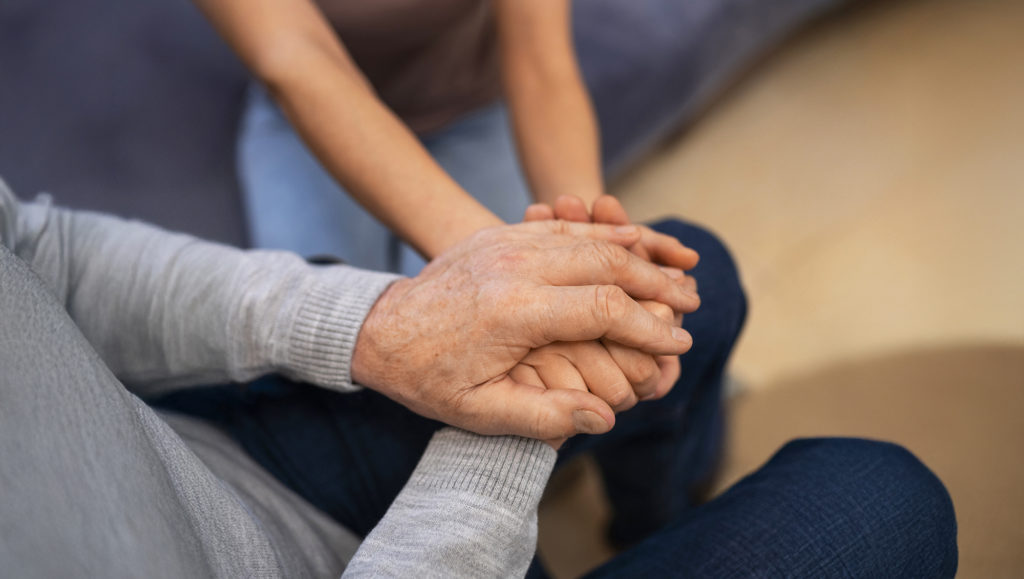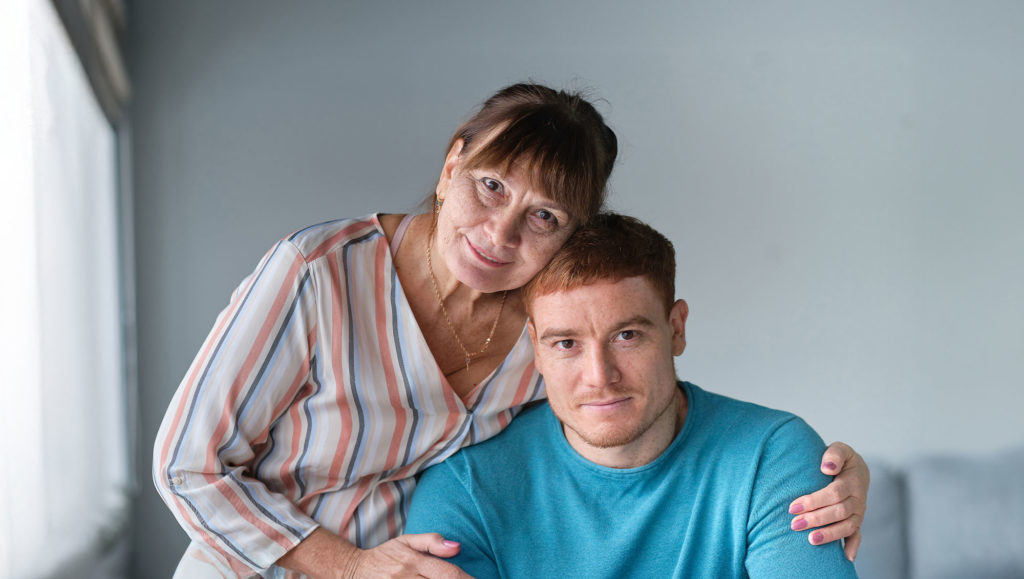Movement disorders are a heterogeneous category of conditions that affect a person’s ability to control their body movements. These conditions can manifest with a variety of symptoms, ranging from tremors to muscle rigidity, from involuntary movements to coordination difficulties. Movement disorders can significantly compromise the quality of life of affected individuals, interfering with daily activities and the ability to move independently.
Causes: what are the most common origins of movement disorders
The causes of movement disorders can vary greatly depending on the specific type of disorder, but they can generally be attributed to central nervous system dysfunctions, particularly at the brain and spinal cord levels.
Some movement disorders are of genetic nature, caused by mutations that affect the function of motor neurons. An emblematic example is Huntington’s Disease, a hereditary condition caused by a mutation in the HTT gene. Other genetic conditions include some forms of ataxia and dystonia, where specific genetic mutations compromise motor control.
Traumatic brain injuries, such as those resulting from car accidents, falls, or blows to the head, can damage the areas of the brain responsible for motor control. This damage can lead to movement disorders such as dystonia or ataxia.
Some infections can affect the central nervous system, causing inflammation and damage to motor neurons. For example, encephalitis, an inflammation of the brain caused by viral or bacterial infections, can cause significant motor symptoms.
Autoimmune diseases, where the immune system mistakenly attacks the body, can affect the central nervous system. Multiple sclerosis is an example of an autoimmune disease that can cause a wide range of motor symptoms, including tremors and coordination difficulties.
Neurodegenerative diseases, such as Parkinson’s Disease and Alzheimer’s Disease, are characterized by the progressive degeneration of neurons. In the case of Parkinson’s Disease, the loss of dopaminergic neurons in the substantia nigra of the brain leads to motor symptoms such as tremor, rigidity, and bradykinesia.
Exposure to toxic substances, such as heavy metals (lead, mercury) or pesticides, can damage the nervous system and cause movement disorders. Manganese intoxication, for example, is known to cause symptoms similar to Parkinson’s Disease.
Factors such as advanced age, the use of certain drugs, and underlying medical conditions, such as diabetes or thyroid disorders, can increase the risk of developing movement disorders. Some antipsychotic drugs, for example, can cause tardive dyskinesia, a disorder characterized by involuntary and repetitive movements.
In summary, movement disorders can result from a wide range of causes, ranging from genetic factors to physical injuries, infections, autoimmune and neurodegenerative diseases, exposure to toxins, and other medical conditions. Understanding the specific causes is crucial for an accurate diagnosis and the development of effective treatment plans.
Types of movement disorders
There are numerous types of movement disorders, each with unique characteristics. Some of the main ones include:
- Parkinson’s Disease: A progressive neurodegenerative disease that causes tremor, muscle rigidity, bradykinesia (slowness of movement), and postural instability.
- Dystonia: A disorder characterized by involuntary muscle contractions that cause repetitive movements and abnormal postures.
- Chorea: Rapid, irregular, and involuntary movements that can affect any part of the body.
- Ataxia: A lack of muscle coordination leading to uncoordinated movements and difficulties in walking and balance.
- Tremor: Rhythmic and involuntary movements of a part of the body, often hands or head, which can be caused by conditions like essential tremor or Parkinson’s Disease.
Movement disorders: identifying the symptoms
The symptoms of movement disorders can vary widely depending on the specific type of disorder and the severity of the condition.
Among the most common motor symptoms are tremors, which often affect the hands or head and can be particularly evident at rest or when attempting precise movements. Muscle rigidity is another frequent symptom, characterized by a constant resistance to movement that can make even simple movements difficult. Involuntary movements, such as spasms or muscle contractions, can significantly interfere with daily activities and cause considerable discomfort.
Slowness of movement, known as bradykinesia, is a distinctive symptom in many neurodegenerative diseases, making it difficult for patients to initiate or complete voluntary movements. This symptom can be particularly debilitating, affecting the ability to walk, dress, or eat independently. Coordination and balance problems are common, often leading to falls and difficulties in maintaining a stable posture.
These motor symptoms can be accompanied by a range of non-motor symptoms that further complicate the management of the disease. For example, in the case of Parkinson’s Disease, in addition to motor symptoms, patients may experience a series of non-motor problems, including depression, anxiety, and mood disorders, which negatively affect the quality of life and the ability to manage the disease.
In conclusion, the combination of motor and non-motor symptoms requires a multidisciplinary therapeutic approach to improve the management and overall well-being of patients affected by movement disorders.
Diagnosis: how are movement disorders identified?
The diagnosis of movement disorders requires a detailed clinical evaluation by a specialized neurologist. The diagnostic process begins with a comprehensive clinical history, during which the doctor gathers detailed information about the patient’s symptoms, their duration, onset, and any triggering or relieving factors. The neurological examination evaluates both motor and non-motor symptoms, carefully observing the patient’s coordination, muscle strength, reflexes, and balance. This examination may also include assessments of posture and gait to identify specific signs of movement disorders.
Additional diagnostic tests may include advanced imaging techniques such as magnetic resonance imaging (MRI), which provides detailed images of the brain and spinal cord, and positron emission tomography (PET), which assesses the metabolic and functional activity of the brain. These tests help to exclude other neurological conditions that may present similar symptoms, such as brain tumors or vascular lesions.
In some cases, genetic tests may be performed to identify specific mutations associated with hereditary disorders such as Huntington’s Disease, Friedreich’s Ataxia, or other forms of genetic dystonia and ataxia. These tests are particularly useful when there is a family history of movement disorders or when symptoms suggest a possible genetic cause.
In addition to clinical and instrumental examinations, laboratory tests may be used to assess any metabolic dysfunctions or nutritional deficiencies that may contribute to the patient’s symptoms. Early and accurate diagnosis is crucial for the effective management of these disorders, as it allows for the timely initiation of the most appropriate treatment and significantly improves the quality of life of patients. A comprehensive and multidisciplinary diagnostic approach ensures that all possible causes and manifestations of the disorder are considered, providing a solid basis for a personalized therapeutic plan.
Treatment: solutions for those suffering from movement disorders
The treatment of movement disorders is a highly personalized process that varies based on the specific type of disorder, the severity of the symptoms, and the individual needs of the patient. Therapeutic options are multiple and can be combined to achieve the best possible results.
One of the main modes is pharmacological therapy. The use of drugs is common in the management of movement disorders. For example, levodopa is considered the first-line treatment for Parkinson’s Disease, as it helps to restore dopamine levels in the brain, significantly improving motor symptoms. Other drugs used include dopaminergic agonists, which mimic the action of dopamine, anticholinergics, which reduce tremors and rigidity, and MAO-B inhibitors, which slow down the degradation of dopamine. For patients with dystonia, muscle relaxants and antispastic drugs can be prescribed to reduce involuntary muscle contractions and improve the quality of life.
For patients with severe and drug-resistant movement disorders, surgical therapy can be a viable option. One of the most common procedures is deep brain stimulation (DBS). This technique involves the implantation of electrodes in the brain that emit electrical impulses to modulate neuronal activity and alleviate symptoms. DBS can be particularly effective for patients with advanced Parkinson’s Disease, severe dystonia, or essential tremor resistant to drugs.
In addition to pharmacological and surgical treatments, physical and rehabilitative therapies play a crucial role in the management of movement disorders. Physiotherapy is essential to improve mobility, muscle strength, and coordination. Through specific exercises and training techniques, patients can increase their independence and reduce the risk of falls. Occupational therapy helps patients improve the skills needed for daily activities, such as dressing, cooking, and writing, facilitating a more autonomous life. Finally, speech therapy is essential for those who have difficulty speaking and swallowing, thus improving communication and safety during meals.
Treatment for walking symptoms: Gondola AMPS
Among the movement symptoms, those related to walking are particularly disabling because they also affect balance, increasing the risk of falls and significantly limiting patients’ independence. Moreover, some walking symptoms respond poorly to traditional treatments or may stop responding effectively.
One of the emerging therapeutic options to improve walking and balance symptoms in patients with movement disorders is Gondola AMPS (Automated Mechanical Peripheral Stimulation). This therapy is based on the mechanical stimulation of two specific points on both feet, sending impulses to the brain that increase functional connectivity in the brain areas related to movement. This process leads to an improvement in various walking parameters, such as speed and step length, thereby contributing to greater stability and fluidity of movement. Patients experience a reduction in the risk of falls and an improvement in managing freezing episodes, making Gondola AMPS therapy a non-invasive and complementary solution to traditional therapies.
Complementary therapies and psychological support
In addition to conventional therapies, many people with movement disorders find benefit in complementary therapies such as acupuncture, therapeutic massage, and yoga, which can help reduce muscle tension and improve overall well-being. Psychological support is also crucial, as movement disorders can significantly impact mental health. Psychological counseling, support groups, and stress management techniques can help patients cope with the emotional and psychological challenges associated with their condition.
In summary, the treatment of movement disorders requires a multidisciplinary and personalized approach that considers all dimensions of the disease. By combining pharmacotherapy, surgical interventions, and rehabilitative therapies, it is possible to significantly improve the quality of life of patients and their families.
Research and technology: new horizons for motor disorders
Research on movement disorders is continuously evolving, with new studies seeking to better understand the causes of these conditions and develop innovative treatments. Gene therapies and stem cell-based techniques are at the center of much research, aiming to repair or replace damaged neurons. Additionally, studies are underway to develop new drugs that can slow the progression of neurodegenerative diseases and improve symptoms.
The use of technology is opening new avenues for monitoring and managing movement disorders. Wearable devices and mobile applications can help patients monitor their symptoms and share data with doctors. These technological tools can provide real-time data, allowing for more precise and personalized management of treatment.
Movement disorders represent a complex challenge for both patients and healthcare professionals. A thorough understanding of the causes, types, symptoms, and treatment options is essential to provide effective care and improve the quality of life for patients. With continuous research and innovation, there is concrete hope for increasingly effective treatments and a future where people with movement disorders can live fuller and more satisfying lives. Early diagnosis, personalized therapeutic approaches, and psychological support are fundamental to best addressing these complex conditions.




